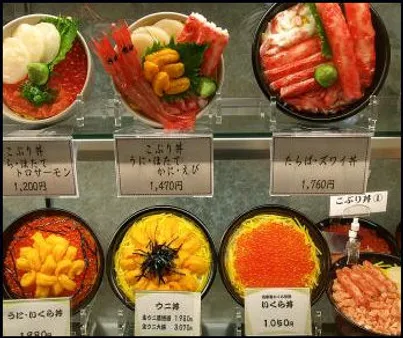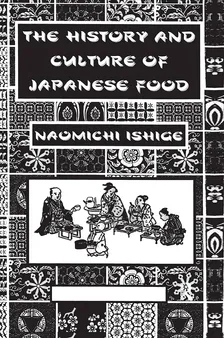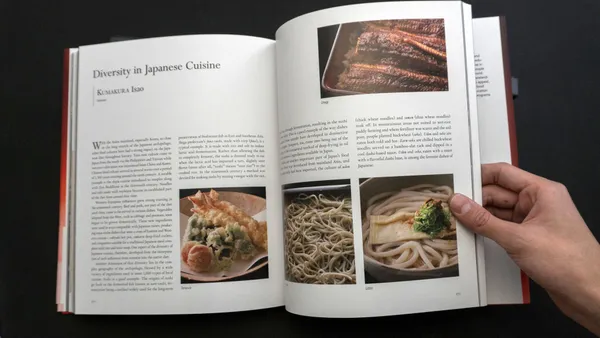Table of Contents
Embark on a captivating culinary journey into The history and culture of Japanese cuisine with Tauhuichiban. Explore the evolution of Japanese cuisine, from its humble origins to its global acclaim. Discover the key ingredients and techniques that define Japanese cooking, and delve into the historical and contemporary influences that have shaped its unique flavors.

The History and Culture of Japanese Cuisine: A Culinary Journey
I. The History of Japanese Cuisine
Japanese cuisine is a diverse and refined culinary tradition that has evolved over centuries, reflecting the country's unique cultural and geographical influences. From the delicate flavors of sushi to the hearty warmth of ramen, Japanese food has gained global recognition and appreciation.
The history of Japanese cuisine can be traced back to the Jomon period (14,000-300 BCE), when the inhabitants of Japan subsisted on a diet of fish, game, and wild plants. With the introduction of rice cultivation during the Yayoi period (300 BCE-300 CE), rice became a staple food and a central element of Japanese cuisine. Buddhist influences during the Nara period (710-794 CE) led to the adoption of vegetarian practices and the development of new cooking techniques such as steaming and simmering.
Period | Key Developments |
|---|---|
Jomon period (14,000-300 BCE) | Subsistence on fish, game, and wild plants |
Yayoi period (300 BCE-300 CE) | Introduction of rice cultivation, rice as a staple food |
Nara period (710-794 CE) | Buddhist influences, adoption of vegetarian practices, new cooking techniques (steaming, simmering) |
During the Heian period (794-1185 CE), the imperial court played a significant role in shaping Japanese culinary traditions. Elaborate banquets and tea ceremonies emphasized the presentation and refinement of food, leading to the development of kaiseki, a multi-course meal served in a formal setting.
The Edo period (1603-1868 CE) marked a period of great economic growth and cultural development. The merchant class emerged as a major force, and new culinary trends emerged, such as the popularity of street food and the development of regional specialties. Soy sauce, miso, and sake became essential ingredients in Japanese cooking during this time.

The History of Japanese Cuisine
II. The Culture of Japanese Cuisine
Japanese cuisine is known for its emphasis on fresh, seasonal ingredients and its delicate flavors. The Japanese have a deep respect for nature, and this is reflected in their food. They believe that the best way to enjoy food is to eat it in its natural state, with minimal processing. This philosophy is evident in the way that Japanese food is prepared and presented.
Japanese cuisine is also known for its variety. There are many different regional cuisines in Japan, each with its own unique dishes and flavors. This diversity is due in part to the country's long history and its diverse geography. Japan is a mountainous country with a long coastline, and this has led to the development of a wide range of culinary traditions.
In addition to its regional cuisines, Japan also has a number of national dishes that are enjoyed throughout the country. These dishes include sushi, sashimi, tempura, and ramen. Sushi is a dish of vinegared rice that is topped with raw fish or seafood. Sashimi is a dish of raw fish or seafood that is served without rice. Tempura is a dish of deep-fried seafood or vegetables. Ramen is a dish of noodles that is served in a broth.
Japanese cuisine is not only delicious, but it is also healthy. The Japanese diet is one of the healthiest in the world, and this is due in part to the emphasis on fresh, seasonal ingredients. Japanese food is also low in fat and calories, and it is a good source of fiber and vitamins.
Japanese cuisine is a reflection of the Japanese culture. It is a cuisine that is based on respect for nature, and it is a cuisine that is rich in variety and flavor.
Region | Dish |
|---|---|
Hokkaido | Seafood |
Tohoku | Noodles |
Kanto | Sushi |
Chubu | Tempura |
Kansai | Ramen |
Chugoku | Seafood |
Shikoku | Noodles |
Kyushu | Sushi |
Japanese cuisine is a UNESCO Intangible Cultural Heritage. This designation recognizes the importance of Japanese cuisine to Japanese culture and its global significance.
Japanese cuisine is a delicious and healthy cuisine that is enjoyed by people all over the world. It is a cuisine that is based on respect for nature, and it is a cuisine that is rich in variety and flavor.

The Culture of Japanese Cuisine
III. The Influence of Japanese Cuisine on Global Cuisine
Japanese cuisine has had a profound influence on global cuisine, with its unique flavors and techniques captivating taste buds worldwide. From sushi and sashimi to ramen and tempura, Japanese dishes have become staples in many countries, inspiring chefs and home cooks alike.
One of the most significant contributions of Japanese cuisine is its emphasis on fresh, high-quality ingredients. Japanese chefs take great care in selecting the finest fish, vegetables, and other ingredients, believing that the natural flavors of the ingredients should shine through in the dishes.
Another key aspect of Japanese cuisine is its focus on balance and harmony. Japanese dishes often feature a delicate balance of flavors, textures, and colors, creating a visually appealing and satisfying dining experience.
Japanese cuisine has also influenced the development of fusion cuisine, where elements of Japanese cooking are combined with other culinary traditions. For example, sushi burritos, which combine the flavors of sushi with the convenience of a burrito, have become popular in many countries.
The influence of Japanese cuisine on global cuisine is a testament to its versatility and appeal. Its unique flavors, techniques, and emphasis on fresh ingredients have made it a beloved cuisine around the world.
Japanese Dish | Country of Origin |
|---|---|
Sushi | Japan |
Sashimi | Japan |
Ramen | Japan |
Tempura | Japan |
Udon | Japan |
Soba | Japan |
Yakitori | Japan |
Teriyaki | Japan |
Shabu-shabu | Japan |
Sukiyaki | Japan |
In addition to the dishes listed above, Japanese cuisine has also influenced the development of many other dishes around the world, including:
- Sushi burritos
- Ramen burgers
- Tempura ice cream
- Japanese-style tacos
- Japanese-style pizzas
The influence of Japanese cuisine on global cuisine is a testament to its versatility and appeal. Its unique flavors, techniques, and emphasis on fresh ingredients have made it a beloved cuisine around the world.

The Influence of Japanese Cuisine on Global Cuisine
IV. The Future of Japanese Cuisine
The future of Japanese cuisine is bright. Japanese food has become increasingly popular around the world in recent years, and this trend is expected to continue. There are several factors that are contributing to the growing popularity of Japanese food.
- Increased awareness of the health benefits of Japanese food. Japanese food is typically low in fat and calories, and it is rich in nutrients. This makes it a healthy option for people who are looking to improve their diet.
- The growing popularity of Japanese culture. Japanese culture is becoming increasingly popular around the world, and this is leading to a greater interest in Japanese food. People are becoming more interested in trying new dishes and learning about the different flavors and textures of Japanese food.
- The globalization of the Japanese food industry. Japanese food companies are increasingly expanding their operations into other countries. This is making Japanese food more accessible to people around the world.
As Japanese cuisine continues to grow in popularity, it is likely to evolve and change to meet the needs of consumers. Some of the trends that may emerge in the future of Japanese cuisine include:
- A focus on sustainability. Japanese chefs are increasingly focusing on using sustainable ingredients and reducing waste. This is likely to become more important as the world becomes more aware of the environmental impact of food production.
- A fusion of Japanese cuisine with other cuisines. Japanese chefs are becoming more experimental with their cooking, and they are increasingly incorporating elements from other cuisines into their dishes. This is likely to lead to the creation of new and innovative dishes that appeal to a wider range of consumers.
- A greater emphasis on health and well-being. Japanese food is already known for its health benefits, and this is likely to become even more important in the future. Chefs are likely to focus on creating dishes that are not only delicious, but also healthy and nutritious.
Overall, the future of Japanese cuisine is bright. Japanese food is becoming increasingly popular around the world, and this trend is expected to continue. As Japanese chefs continue to innovate and create new dishes, Japanese cuisine is sure to remain a vibrant and exciting part of the global culinary landscape.
The Challenges of Preserving Japanese Cuisine
While the future of Japanese cuisine is bright, there are some challenges that need to be overcome in order to preserve this culinary tradition. One of the biggest challenges is the globalization of the Japanese food industry. As Japanese food becomes more popular around the world, it is important to ensure that the quality of the food does not decline. Another challenge is the rising cost of ingredients. The cost of seafood, for example, has been rising in recent years, and this is making it more difficult for Japanese chefs to create affordable dishes. Finally, there is the challenge of preserving the traditional techniques of Japanese cooking. As Japanese chefs become more innovative and experimental, it is important to ensure that they do not abandon the traditional techniques that have made Japanese cuisine so unique.Despite these challenges, there are a number of things that can be done to preserve Japanese cuisine. One important step is to educate consumers about the importance of quality Japanese food. Consumers need to be aware of the difference between authentic Japanese food and low-quality imitations. Another important step is to support Japanese farmers and fishermen. These individuals are essential to the production of high-quality Japanese ingredients. Finally, it is important to support Japanese chefs who are committed to preserving traditional cooking techniques. These chefs are the keepers of the flame of Japanese cuisine, and they deserve our support.Overall, the future of Japanese cuisine is bright. There are some challenges that need to be overcome, but with the support of consumers and policymakers, Japanese cuisine can continue to thrive for many years to come.

The Future of Japanese Cuisine
V. Conclusion
Japanese cuisine is a testament to the rich history, diverse culture, and culinary artistry of Japan. Its evolution over centuries has resulted in a unique and sophisticated cuisine that continues to captivate taste buds worldwide.
From the delicate flavors of sushi and sashimi to the hearty warmth of ramen and udon, Japanese food offers a culinary journey that is both satisfying and enlightening. Its emphasis on fresh, seasonal ingredients, meticulous preparation, and beautiful presentation elevates dining to an art form.
As Japanese cuisine continues to evolve, it is sure to retain its core values while embracing new influences and innovations. Its enduring popularity is a testament to its timeless appeal and the enduring spirit of Japanese culinary tradition.